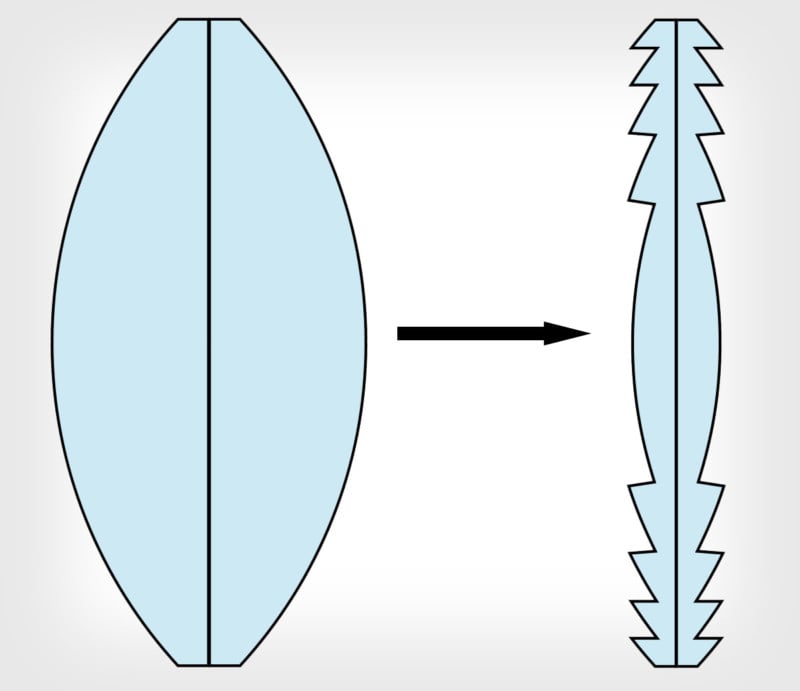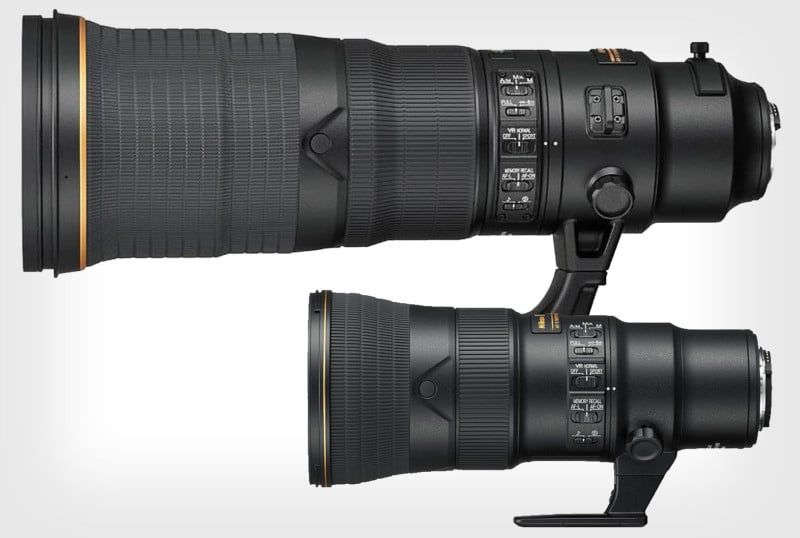How a Fresnel Lens Works, Explained with a Simple Blackboard Model
If you’ve heard of Fresnel lenses in photography before but have no idea what they are or how they work, here’s a fantastic short primer. In this 3.5-minute video, physicist David G. Willey (AKA the Mad Scientist) explains the science behind the lens style using a simple and easy-to-understand model on a blackboard.
In this particular clip from a lecture of his, Willey explains how French physicist Augustin-Jean Fresnel (1788-1827) figured out how to make thick and heavy optical lenses thinner and lighter.
The basic idea is that if you cut a parallel gap into the middle of an optical lens, light still enters and exits both sides at the same angle.
“Fresnel realized that if I have a really big thick lens, it’ll still be the same lens even if I take out a parallel-sided strip,” Willey says. “And if I can take out one parallel-sided strip, why not take out many parallel-sided strips?”
So if you hollow out a lens with parallel strips, it’ll continue to be the same lens despite having an air gap inside. But this new hollow lens will be quite weak compared to a solid lens. The solution? Collapse the two sides together for a jagged, ultra-thin, lens that’s optically equivalent to the original large, thick, solid lens.

“It is much thinner, much lighter than the lens before but it acts exactly the same way,” Willey says.
Camera flashes and accessories use Fresnel lenses to focus light into a narrower beam, great for maximizing light intensity from a portable, battery-powered device.
The iconic Polaroid SX-70 used a Fresnel lens as part of its complex collapsible SLR design.
View cameras can use Fresnel lenses to help photographers better focus and compose photos by increasing the brightness of the image projected by the lens onto the camera’s ground glass.
Canon and Nikon are also two camera companies that use Fresnel lenses to reduce the size of telephoto lenses, which are traditionally large and bulky. Canon’s green-ringed Diffractive Optic (DO) lenses and Nikon’s new Phase Fresnel (PF) lenses both offer significant size and weight savings compared to their traditional counterparts.
Here’s the striking size difference between the traditional Nikon 500mm f/4E AF-S NIKKOR FL ED VR lens and the Nikon AF-S NIKKOR 500mm f/5.6E PF ED VR:

While you do give up a stop of light with the new 500mm PF lens, it weighs 3.2 pounds (1.45kg) compared to the 6.8 pounds (3.09kg) of its big sibling.
Fresnel’s name on his lens breakthrough is well deserved, as his technology is now used for a wide range of applications, from lighthouses (it’s “the invention that saved a million ships“) to cameras, lenses, and flashes used through the history of photography.